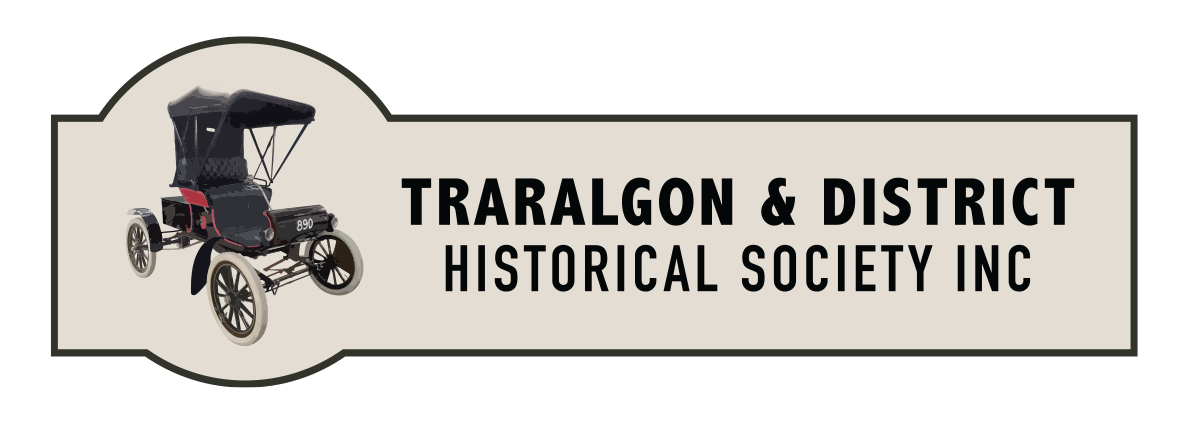Traralgon Beginnings – Birth of a Town
Compiled by J.F. Power (1995)
In 1840, the Polish born Count Strzelecki, after exploring the Snowy Mountains, where he climbed and named Mt. Kosciusko in honor of the Polish patriot, followed McMillan's track through Gippsland to the Glengarry River, (later named the Latrobe). He then journeyed south west along the north bank until he came to a spot nearly opposite the present site of "Fernhill" homestead. Here his party crossed the river. He intended to proceed due south to Corner Inlet, but the dense forest of the ranges, later named after him, forced them to turn towards Western Port. Somewhere near the spot known today as Koornalla they abandoned their horses and turned west. The journey, expected to take only days, took three weeks.
As Strzelecki journeyed through the plain country south of the river, he passed probably no more than three or four kilometers to the east of the future city. He noted the fine land, and after his return to Melbourne, reported on this. Very soon other parties were penetrating into the area. In one of these was a young settler from the Port Phillip district, Edward Hobson, who with his brother Edmund had large holdings in the Rosebud area. Hobson's party had to fight their way through thick scrub to approach the district from the west. He was very impressed with the country in the vicinity of the junction of the Traralgon Creek and the Latrobe River. His brother, Dr. Edmund Hobson, who conducted a practice in Melbourne, took up a run of 19,000 acres which covered all of the area of Traralgon and out to Wade's Creek in the west, and to about the spot where Refair is today. The southern boundary was the edge of the hills. He made his brother Edward his overseer.
In April 1844, Edward went out from their station near Arthur's Seat, with a large mob of cattle. It took them two months, travelling via Tarwin and South Gippsland, to reach the run. On the way they had to contend with flooded rivers and creeks, and lost 240 cattle. They finally arrived in June 1844. Hobson constructed a hut down near the mouth of the Creek, and this was the first building to be erected in our district.
During the next year, 1845, other settlers began to move into the area. James Rintoul had already taken up Loy Yang to the east, and Gorringe had taken up Maryvale on the west. Another settler, Henry Meyrick, was taking sheep to the Glenmaggie run for his brother Alfred. While wintering at Hobson's, his young assistant, George Bolton Eagle, was mysteriously stricken with a strange illness and died very quickly. He was buried some distance away from the hut, close to the junction of the Creek and River. The grave is the oldest known grave of a European in this area. In 1963, the Traralgon and District Historical Society, erected a plaque to mark the site. In 1994 as part of the city's Sesquicentenary celebrations, the then Council of the City of Traralgon, in conjunction with the Historical Society, erected a more permanent plaque and fenced the site.
In 1845, James Rintoul sold Loy Yang run to John Fowler Turnbull. Turnbull lived on the Pre-Emptive Right until the early 1870s, but by this time much of the original run had been cut up for selection. Edward Hobson lived on the Traralgon run until the early 1850s when he returned to the Mornington. Peninsula area. In 1847 Dr. Hobson made his only visit to the run. In 1848 he died suddenly. The run was administered by his Trustees, J.H.N. Castle and J.R. Murphy. In 1853, James Castle applied to have the run split in two, divided by the Creek. It was then known as the East and West Traralgon runs and the lease was put up for sale. Edward Hobson purchased the West run, which covered the area from the Traralgon Creek to Wade's Creek, and Turnbull purchased the East run, from the Creek to his boundary. In 1851, Hobson sold the West run to James Purves.
In the meantime, the track to Melbourne through West Gippsland had been opened up. In 1846, a man named Thomas Windsor, who probably worked for Turnbull, set up an accommodation house on the hill overlooking what is today Victory Park. He and his wife ran this inn until about 1856, when Jeremiah Smith took it over. In 1846 a son, William, was born to the Windsors. He was the first white child born in the district.
References:
The River of Little Fish - William J. Cuthill 1970
From Squatter's Hut to City - W.A. Thompson and Jean Court, 1976
A
History of Loy Yang, 1844-1978 - Kathleen M. Huffer, 1979
